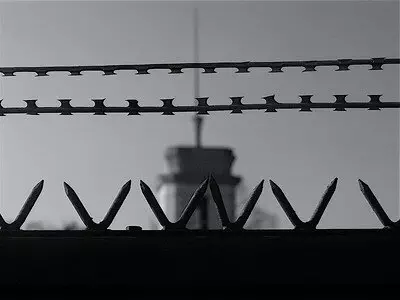
Donate to the Linda McKay-Panos Scholarship Fund

Donate to the Linda McKay-Panos Scholarship Fund
Source: flickr/Matthias Muller
By Myrna El Fakhry Tuttle
Reposted from LawNow 45(3) with permission
Individuals may identify with a gender that goes along with their sex given at birth, they may identify with a gender that is different from their sex given at birth, or they may identify with a non-traditional notion of gender. “Transgender” characterizes those who identify with a non-traditional gender.

By Myrna El Fakhry Tuttle
Reposted from LawNow 45(3) with permission
Individuals may identify with a gender that goes along with their sex given at birth, they may identify with a gender that is different from their sex given at birth, or they may identify with a non-traditional notion of gender. “Transgender” characterizes those who identify with a non-traditional gender.
The Ontario Human Rights Commission (OHRC) defines gender identity:
It is [a person’s] sense of being a woman, a man, both, neither, or anywhere along the gender spectrum. A person’s gender identity may be the same as or different from their birth-assigned sex.
The OHRC also clarifies that gender expression can include “behaviour and outward appearances such as dress, hair, make-up, body language and voice. A person’s chosen name and pronoun are also common ways of expressing gender.”
Correctional institutions used to place transgender inmates according to their sex assigned at birth instead of the gender they identify themselves with (their gender identity). Transgender prisoners in Canada usually face discrimination and intimidation, and exposure to different forms of abuse.
So how do federal, provincial and territorial laws or policies protect transgender inmates?
Federal
Bill C-16
On June 19, 2017, Bill C-16, An Act to amend the Canadian Human Rights Act and the Criminal Code, became law. Bill C-16 amended the Canadian Human Rights Act and the Criminal Code. This Bill “protects individuals from discrimination within the sphere of federal jurisdiction, as well as protecting against hate propaganda and hate crimes, on the basis of gender identity and gender expression.”
The Bill amended section 3(1) of the Canadian Human Rights Act by adding “gender identity” and “gender expression” among the prohibited grounds of discrimination. The amendment prevents the federal government from discriminating based on gender identity and gender expression, including in its prisons.
Bill C-16 also amended two parts of the Criminal Code:
1. It added “gender identity or expression” to section 318(4) of the Code, which defines an identifiable group for the purposes of advocating or promoting genocide (section 318) and inciting hatred (section 319).
2. It added “gender identity and expression” to section 718.2(a)(i) of the Code, which deals with sentences for hate crimes. This section allows courts that impose a sentence to take into account evidence that the offence was motivated by bias, prejudice or hate based on a person’s gender identity or expression. It means judges should consider hatred based on gender identity or gender expression.
The Correctional Service Canada
In 2017, Prime Minister Justin Trudeau promised to make sure transgender inmates are placed in prisons based on their gender identity. He stated:
I will make sure we look at it and we address it and we do right in recognizing that trans rights are human rights and we need to make sure we are defending everyone’s dignity and rights in every way we can.
After that promise, the Correctional Service Canada (CSC) – which governs the federal penitentiary – changed its transgender inmate placement policy. The CSC’s old policy was to place transgender prisoners according to their sex assigned at birth.
About the old policy, Boyer, Odeyemi and Fletchers stated:
As recently as January 2017, the CSC policy dictated that trans prisoners be assigned to either men’s or women’s penitentiaries based on their pre-operative sex. Consequently, trans women who had not undergone gender affirmation surgery were forced to live in men’s prisons instead of with the gender they identify with. This CSC policy has led to extreme difficulties for these women, who are often subjected to sexual harassment and assault. Frequently, they are sent to solitary confinement or are otherwise isolated for their protection.
However, in December 2017, the CSC adopted an interim policy of placing transgender inmates according to their preference, “regardless of their anatomy (sex) or gender on their identification documents, unless there are overriding health or safety concerns which cannot be resolved.” This interim policy gives transgender inmates in federal prisons the “same protections, dignity and treatment as others”. According to the interim policy:
Steps must be taken to maximize the privacy and confidentiality of any information related to an offender’s gender identity. Information about an offender’s gender identity will only be shared with those directly involved with the offender’s care, and only when relevant. Any conversations or consultations amongst staff or with the offender, including discussions regarding cell sharing and intake interviews, must occur privately, out of hearing range of anyone else that does not need to know.
In addition, the 2017 Gender Dysphoria policy states that a prisoner is considered for sex-reassignment surgery if they have lived in an identity-congruent gender role for twelve continuous months and a specialist physician recommends the surgery. The CSC will pay the cost of the surgery and will proceed without delay to determine the timing of the surgery.
Also, under this new policy, “the Institutional Head will ensure that staff who have regular contact with trans prisoners have the necessary knowledge to effectively respond to their needs. Trans prisoners will be permitted to wear clothing appropriate to their self-identified gender.”
In 2017, the federal prison service approved for the first time to move a transgender woman, Fallon Aubee – upon her request – to a women’s prison based on her gender identity.
In the 2019 case of Boulachanis v Canada (Attorney General), Justice Grammond of the Federal Court granted a transgender woman, Jamie Boulachanis’, application for an interlocutory injunction requesting she be transferred to a women’s prison. Her court application came after the CSC denied her transfer request. Justice Grammond stated:
Ms. Boulachanis’s position is straightforward: keeping her in a men’s institution is discriminatory, and in addition, this violates the interim policy. Since she is legally a woman, she has the strict right to be accommodated in a women’s institution … The interim policy the Service adopted in December 2017 was also based on the idea that respecting the right to equality of trans people required that their choice to be in a men or women’s institution be respected. (See paras 30 and 36.)
Provincial & Territorial
Most provincial and territorial human rights legislation have added “gender identity” and “gender expression” to the list of prohibited grounds of discrimination. However, most provinces and territories do not have any particular guidelines on placing transgender inmates according to their sex given at birth or on their gender identity.
In 2012, Ontario was the first province in Canada to protect transgender rights. Ontario enacted Toby’s Act (Right to be Free from Discrimination and Harassment Because of Gender Identity or Gender Expression). This Act amended the Ontario Human Rights Code by acknowledging gender identity and gender expression. And in January 2015, Ontario became the first province to allow transgender inmates, “who have not undergone gender affirmation surgery”, to be placed in facilities based on their self-identified gender. Ontario allowed inmates to be referred to by their chosen names and preferred pronouns.
In 2016, British Columbia amended its Human Rights Code to add “gender identity or expression” as a prohibited ground of discrimination. Also in 2016, British Columbia became the second province to implement new policies that determine where to place inmates based on their gender identity. In addition, transgender inmates can “keep items with them that are necessary to expressing their gender and, when possible, they will be integrated into the general population, rather than being placed in solitary confinement.”
In 2017, the Yukon amended its the Human Rights Act and Vital Statistics Act to protect transgender individuals from discrimination on the grounds of gender identity and gender expression. The Vital Statistics Act currently allows changing the sex on a birth registration without any surgery. Moreover, according to the Yukon Corrections Adult Custody Policy Manual, “trans prisoners are placed according to their self-identified gender or housing preference unless there are overriding and/or safety concerns that cannot be resolved.” This policy grants trans prisoners the right to “choose to be strip searched by either a male or female staff member or choose a split search.” (A split search is where a “female officer searches the top part of a transgender woman and a male officer searches the bottom part”.)
No other province or territory has any specific policies for transgender inmates.
As for Alberta, it amended the Alberta Human Rights Act in 2015 to include “gender identity” and “gender expression” as prohibited grounds of discrimination. In 2018, the Lethbridge Public Interest Research Group, the University of Lethbridge Student Union’s Pride Centre, OUTreach Southern Alberta Society, lawyer Miranda Hlady and others contacted the Alberta government to address “policies concerning transgender, binary and two-spirited inmates housed at provincial correctional facilities.” Unfortunately, nothing has changed. Alberta still does not have any policies on the placement of transgender prisoners.
Conclusion
Alberta and other provinces and territories should follow Ontario, British Columbia and the Yukon. They should take steps to protect transgender inmates by placing them in institutions according to their gender identity and gender expression. Without any guidelines regulating the situation, provincial prison authorities have unrestricted powers in dealing with these inmates and may abuse these inmates’ rights.
Most of the time, transgender prisoners are isolated and kept in more secure prisons for protection reasons. But that should not be the case. Transgender inmates should be able to live according to the gender they identify with and should be able to express their gender as they wish without fear or discrimination. These inmates should have the same protection, treatment and status as other inmates.




2500 University Drive NW
Calgary, AB T2N 1N4
(403) 220-2505
aclrc@ucalgary.ca